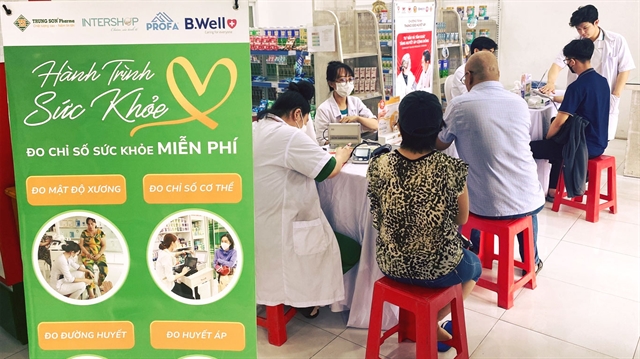 Society
Society

.jpg)
|
| Ensuring occupational safety is among Việt Nam’s priorities in 2021-2025. — VNA/VNS Photo |
HÀ NỘI — Việt Nam has set an annual target to reduce the rate of fatal occupational accidents by 4 per cent.
This is one of the key goals of the National Programme on Occupational Safety and Health for 2021-2025.
The national programme on occupational safety and health for 2021-2025 has been implemented nationwide for all occupations, prioritising jobs with a high risk of work accidents in small and medium enterprises, co-operatives and craft villages.
The programme aims to improve working conditions, prevent occupational accidents and occupational diseases, ensure worker safety, and contribute to sustainable development.
Việt Nam will also focus on increasing the number of workers receiving occupational disease examinations by 5 per cent and increasing the establishments with monitored working environments by 5 per cent.
The programme also targets advanced training to be received by more than 90 per cent of people in charge of managing, directing and organising work hygiene and safety at district levels and on the management boards of economic zones, industrial parks, export processing zones and high-tech zones.
Over 80 per cent of employees working in occupations with strict occupational safety requirements must be well-trained.
In addition, more than 80 per cent of craft villages and co-operatives with a high risk of occupational accidents and diseases must have access to information on job safety.
The programme also targets that more than 80 per cent of people suffering from occupational accidents and diseases are entitled to compensation and benefits.
All fatal occupational accident cases must be reported, investigated, and handled according to the law.
The programme will draft key tasks, including perfecting the system of policies and laws; improving the capacity of supervision and provision of public services on occupational safety and health; reviewing and proposing amendments to the Law on occupational safety and hygiene and related national technical regulations.
Other tasks such as criteria for diagnosis and assessment of occupational diseases and guidelines for treating occupational diseases; the list of occupational diseases; and methods to identify hazardous occupations must be developed.
Equipment, facilities and human resources for the supervision of occupational safety; quality management of products and goods; and diagnosis, assessment, and treatment for people suffering from occupational accidents and diseases should be invested in and upgraded.
The programme will continue to renew educational content and diversify information channels to raise public awareness.
Authorities must enhance research and application of science and technology in work safety, support safe technical solutions to combat dangerous factors in high-risk industries such as mineral mining and processing metallurgy, chemicals and construction.
International cooperation to mobilise support resources for workplace safety is also needed as the country commits to International Labour Organisation standards.
The Government requires the Ministry of Labour, Invalids and Social Affairs to coordinate with other agencies to review, amend and supplement the contents of policies and laws related to occupation safety; apply information technology to management, build a national database on occupational safety; and deploy an appropriate management system for 150 enterprises with high risk of occupational hazards.
Some 6,504 occupational accidents were reported nationwide in 2021. A total of 749 were fatal accidents, killing 786 people.
HCM City, Hà Nội, Hải Dương, Thanh Hóa, Bình Dương, Đồng Nai, Quảng Ninh, Thái Nguyên were the localities with the highest number of deaths from occupational accidents in 2021. — VNS




